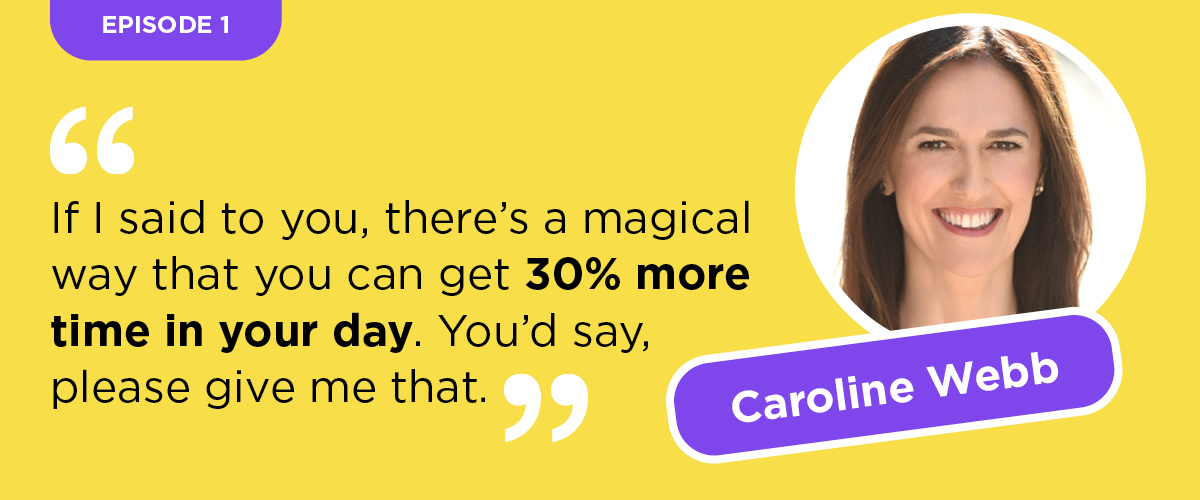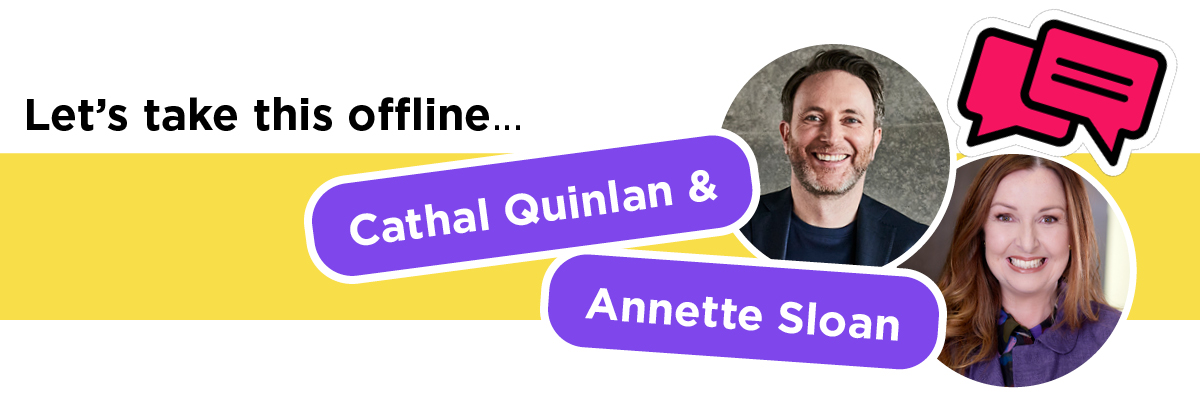
EDITION 1
How to have a better day at work
In this Better@Work series opener, we welcome the amazing Caroline Webb as our first guest for a fun and insightful chat. I am a huge fan of Caroline, and I’ve loved and leveraged her teachings for many years.
Caroline is an executive coach, author, speaker and senior advisor to McKinsey, who specialises in showing us how to use the insights from behavioural economics, psychology and neuroscience to transform our approach to everyday working life for the better. In this episode we share practical evidence-based techniques to help you in your daily working life.
I chat with Caroline about her book “How to Have a Good Day” and what inspired her life’s work on how to be at our best at work. Caroline and I explore our understanding of what a good day looks like, the science, keeping our brains in discovery mode, and the mind body loop. Caroline’s shares her seven tips for a good day, (see below) and we have fun talking through the “When Then” technique, the multi-tasking myth, the “Positive No”, Brain-friendly feedback techniques, the “Peak-End” rule and even Donna Summer!

Seven tips for a good day 💛
- Priorities – Set intentions. Before any important task or conversation, take a moment to articulate what you want to pay attention to. It will change the way you experience it.
- Productivity – batch your tasks. Group together similar tasks and tackle them together, to take less time over them. For example, create 1-2 ‘zones’ in the day when you blitz your email, and you’ll spend less time on it than if you scatter it throughout the day.
- Relationships – show appreciation. If someone’s behaving badly, find something genuine you can say to appreciate about them, however small it is. It will reduce their defensiveness and improve their behavior.
- Thinking – do a pre-mortem. Imagine it’s the future and your decision has played out badly. Ask yourself: what went wrong? What does that suggest you might be missing? So what should you do differently now?
- Influence – humanise your message. Describe how your idea affects a real person. Trying to highlight a problem? Give an example of how life will be better for someone when it’s fixed.
- Resilience – get some distance. For example, imagine you’re looking back on this in a year’s time, or imagine you’re giving advice to a friend about the situation you’re in.
- Energy – end on a high. Finish every day – and ideally each task and conversation – with something upbeat, by taking a moment to recap the best bits. “It was so good that this happened/we did this/to hear about that…” You’ll remember it more positively as a result.

In our “Let’s take this offline” segment I debrief on Caroline’s key insights with my friend Annette and answer a question from our listener Angus about how to turn around a very challenging regular meeting. We guide Angus to:
- Start with kindness and compassion for himself and everyone enduring this challenging regular meeting
- Talk the situation through with a mentor who understands the subject matter
- Check his energy drivers of exercise, hydration and sleep ahead of the meeting day
- Set and note down his intentions for the meeting, being specific about what he wants to focus on
- And if safe and sensible to do so, in a positive growth mindset, talk about the challenging meeting with the senior person one on one, using Caroline’s approach:“What I like about this meeting is [abc], and what would make me like it even more is if we could focus on the positive aspects of our work and how best to amplify and leverage those”.
We’ll keep you posted on how things improve for Angus.
Send us your questions
Every episode, we’ll address a question from you, our listeners. So, please let us know your issues, dilemmas, challenges or prickly situations holding you or your team back from being better at work.
About Caroline Webb
Caroline is an executive coach, author, speaker and senior advisor to McKinsey. Caroline specialises in the use of insights from behavioural economics, psychology and neuroscience to transform our approach to working life. Her book “How to Have a Good Day” has been published in 14 languages and more than 60 countries
